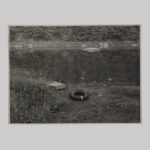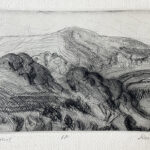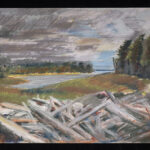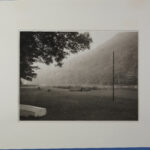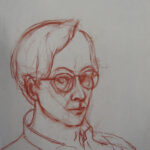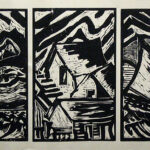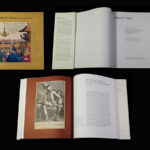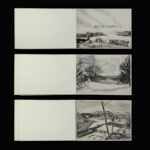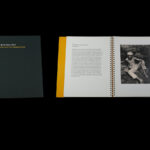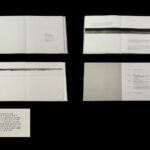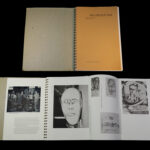Brent Seabrook
I have been influenced by nearly everything I
see - and much of it looked good. Maybe that's just my strong visual
orientation dominating my perceptions.
When I took Muirhead's
two dimensional design class, I finally figured out what I wanted to do with my
college career: Art. I was most engaged, productive and creative at
Middlebury after I became a studio major.
As I began senior year in the studio, I wanted to make large
color field paintings.
Materials for making 8 x 10 foot paintings were not only
beyond my means, but paintings of that size seemed way too
pretentious for me to be making. One solution to work with
my love of color is the relief print "Come Together" in the gallery, below.
I was much impressed by the poster artists of San Francisco
during 1967 Haight-Ashbury, especially Victor Moscoso's work. Consider the color-packed Cider Jelly label
mockup, below. Other influences in my graphic design work were advertising
art from the late 19th and early 20th century, seen in old periodicals
scrounged from abandoned farmhouses in Addison County. See the pencil drawing of the Cider Jelly
label.
After
graduation, I worked in a Vermont orchard for the apple harvest and began taking photographs with the small camera. I kept the camera
with me during the workday and photographed many aspects of the harvest
process. These images were intended, at the time, as reference material for
future paintings. Gradually, as I saw the potential for photography
to better tell the stories I wanted to convey, I began to make photographs as
the final product.
For me, the final product of my photographs is a physical
print, typically in the 14in x 21in - 21in x 28in size. While the image viewed on a screen is
delightful, the actual print, with the ink a visible presence on paper, is
the tradition of printmaking I continue to pursue. And, unlike the screen version, you can enjoy
the print when the electricity is off.
My
goal in making a photograph is to draw the eye into the image, while
provoking the mind to ponder its significance.1 A good example is Grading
Maple Syrup. Here
we see the father and son sugar makers Dave and Eric Matt. Dave is holding the set of grading samples up
to the light. Eric, his son, boiled the
syrup that day. We see Eric looking
expectantly at his father, hoping his syrup makes "Fancy" grade.
The Vermont Farm Work Project actually began more than 40 years ago. My family had a camp not far from the city in a rural area. Growing up we spent most of the summers and many weekends at the camp working on projects. I remember being fascinated by the large fields of corn planted in rows that flashed like cards in a deck as we drove past them. In the summer, my brothers and I helped a neighboring farmer make hay: hot, hard and itchy work. I thought how special this experience was, something my friends in the city knew nothing about. Now, more than 50 years later, I’m still making art and doing farm work.
To see more of my work please visit: http://www.brentseabrookphotography.com/
1. Karen Halversen
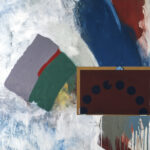 Rauschenberg Meets Muirhead, Oil on canvas, 54in x 42in, 1970, NFS
Rauschenberg Meets Muirhead, Oil on canvas, 54in x 42in, 1970, NFS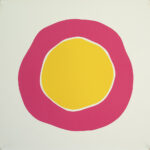 Come Together, Relief print, 16in x 16in, 1971, NFS
Come Together, Relief print, 16in x 16in, 1971, NFS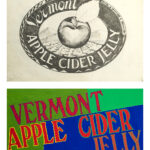 Cider Jelly Label designs, Pencil on paper, Gouache on paper, Top, 12in x 18in, Bottom, 9in x 18in, 1978, NFS
Cider Jelly Label designs, Pencil on paper, Gouache on paper, Top, 12in x 18in, Bottom, 9in x 18in, 1978, NFS Apple Flower, Open Cluster, Cibachrome print, 5in x 7in, 1979, NFS
Apple Flower, Open Cluster, Cibachrome print, 5in x 7in, 1979, NFS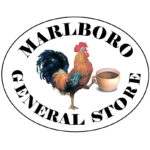 Logo for Marlboro General Store, digital file, 2013, NFS
Logo for Marlboro General Store, digital file, 2013, NFS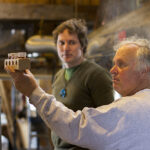 Does It Make the Grade?, Archival pigment print, Image size: 14in x 21in, 2015, $300
Does It Make the Grade?, Archival pigment print, Image size: 14in x 21in, 2015, $300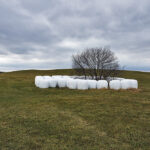 Hayfield Roundup Near Danville, VT, Archival pigment print, Image size: 16in x 24in, 2015, $400
Hayfield Roundup Near Danville, VT, Archival pigment print, Image size: 16in x 24in, 2015, $400 Roan Spence, Jamaican apple picker, Archival pigment print, Image size: 21in x 14in, 2016, $300
Roan Spence, Jamaican apple picker, Archival pigment print, Image size: 21in x 14in, 2016, $300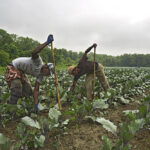 Hoeing cabbage: Early morning haze, Archival pigment print, Image size: 14in x 21in, 2017, $300
Hoeing cabbage: Early morning haze, Archival pigment print, Image size: 14in x 21in, 2017, $300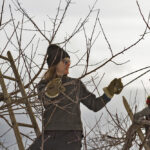 Andrea Leads the Pruning Crew, Archival pigment print, Image size: 14in x 21in, 2017, $300
Andrea Leads the Pruning Crew, Archival pigment print, Image size: 14in x 21in, 2017, $300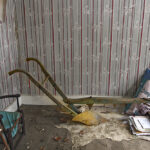 The Golden Plow, Archival pigment print, Image size: 16in x 24in, 2020, $400
The Golden Plow, Archival pigment print, Image size: 16in x 24in, 2020, $400 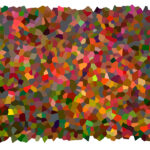 October in the Blueberry Fields, Archival pigment print, 24in x 36in, 2016, $450
October in the Blueberry Fields, Archival pigment print, 24in x 36in, 2016, $450

